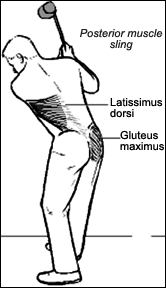I am reading with much enthusiasm the book Real Movement by physical therapist and massage therapist Adam Wolf, aka the Biomechanical Detective. In a big way, it’s like re-reading a very good book that I’ve enjoyed in the past. I am familiar with a lot of the concepts discussed by Adam and what I enjoy immensely is coming back and examining those concepts through his eyes and his experiences.
Wolf is among other things, a Fellow of Applied Functional Science (FAFS) by way of the Gray Institute. I also study and apply Gary Gray’s material. I always like to see how other practitioners apply the principles of 3D movement. I love gaining new perspectives on how to create functional exercises, or exercises that most translate to real life. You can see a lot of examples of this at the Adam Wolf, PT, Biomechanical Youtube Channel.
Something I just learned is that Adam’s dad is Chuck Wolf, another functional exercise and movement professional. Many years ago I was introduced to the concept of Flexibility Highways at one of Chuck’s seminars. These highways aka muscle slings, aka myofascial lines, are networks of muscle and fascia that often work together during real-world, whole-body movements. (“Real-life” movements are in contrast to many of the artificially isolated movements that we see in gyms, especially those performed on machines.) One example is the posterior oblique sling as used in a golf swing. Another example is the anterior oblique sling used when throwing.

The anterior X sling is a big part of throwing, batting, golfing, running, punching and all sorts of things.
The fascial sling system was an interesting concept to me at the time but it has sort of faded from my thinking in recent years. Now, reading Adam’s book and watching his videos has brought those flexibility highways or slings to the front of my mind. These sling concepts are informing both the mobility work I’m doing with clients as well as my exercise selection. In working along and within these sling systems I feel like I’m capturing just about all of the movement we humans are capable of. Check out the following videos from Adam Wolf where he discusses how you can move better by following these fascial lines.

